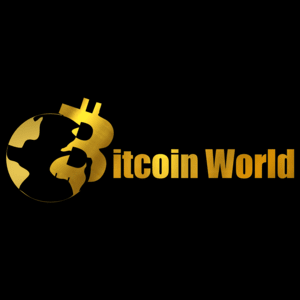Digital Currency Era Arrives: Critical Risk Management is Key, Says IMF
8 min read
The world of finance is undergoing a rapid transformation, driven by technological innovation. At the forefront of this change is the rise of Digital Currency . It’s no longer a fringe topic; it’s a reality that policymakers and institutions globally are grappling with. This pivotal shift was recently underscored by Kristalina Georgieva, the Managing Director of the IMF (International Monetary Fund), who stated unequivocally that the digital currency era has indeed arrived. But with this arrival comes a crucial challenge: how do we effectively implement robust Risk Management strategies to navigate this new landscape? Georgieva’s statement isn’t just an observation; it’s a call to action. It signals that the conversation has moved beyond ‘if’ digital currencies will play a significant role to ‘how’ we ensure they integrate safely and beneficially into the global financial system. The potential upsides are significant – increased efficiency, greater financial inclusion, and faster transactions. However, the risks are equally substantial, ranging from financial stability concerns to issues around consumer protection and illicit finance. Addressing these risks head-on through effective Risk Management is paramount. Why is Digital Currency Risk Management So Critical Now? The emergence of various forms of Digital Currency presents a multifaceted challenge. We’re not just talking about Bitcoin or other cryptocurrencies anymore. The landscape includes: Central Bank Digital Currencies (CBDCs): Digital forms of a country’s fiat currency issued and backed by the central bank. Stablecoins: Cryptocurrencies designed to minimize price volatility, often pegged to a reserve asset like a fiat currency or commodity. Other Cryptocurrencies: Decentralized digital assets like Bitcoin and Ethereum, known for their volatility and innovation. Each of these types carries unique risks and requires tailored approaches to management. The interconnectedness of the global financial system means that risks in one area can quickly spill over into others. The IMF , with its mandate for global financial stability, is particularly focused on understanding and mitigating these potential spillovers. Kristalina Georgieva highlighted that while the innovation is exciting, the potential pitfalls require immediate attention. Think about the speed at which digital assets can move across borders, the complexity of the underlying technology, and the varying levels of understanding among users and even institutions. These factors amplify traditional financial risks and introduce new ones. Effective Risk Management in this context involves understanding, assessing, and mitigating these potential negative impacts. It requires a coordinated effort involving national regulators, international bodies like the IMF , and the private sector developing these technologies. What are the Key Risks Associated with Digital Currency? As the Digital Currency era matures, several categories of risk become more prominent. Addressing these is central to the call for enhanced Risk Management . Here’s a breakdown of some key areas of concern: Risk Category Description Potential Impact Financial Stability Rapid and large-scale shifts from traditional bank deposits to digital currencies (especially stablecoins or CBDCs) could disrupt banking systems and credit provision. Bank runs, credit crunch, increased cost of capital, systemic crises. Consumer and Investor Protection Fraud, scams, cyber-attacks, loss of private keys, lack of clear recourse mechanisms, and volatility (for non-stable assets). Significant financial losses for individuals, erosion of trust in digital finance. Illicit Finance Risks Use of digital currencies for money laundering, terrorist financing, sanctions evasion, and other illegal activities due to perceived anonymity or difficulty in tracing transactions. Undermining anti-money laundering (AML) and counter-terrorist financing (CFT) efforts, facilitating criminal activity. Cybersecurity Risks Vulnerability of digital currency platforms, wallets, and underlying infrastructure to hacking, operational failures, and data breaches. Loss of funds, disruption of services, reputational damage. Legal and Regulatory Uncertainty Lack of clear legal status, differing regulations across jurisdictions, and challenges in applying existing laws to new technologies. Hindered innovation, regulatory arbitrage, increased compliance costs, difficulty in enforcement. Monetary Policy Transmission Potential impact of CBDCs or widely adopted stablecoins on a central bank’s ability to manage interest rates and control the money supply. Reduced effectiveness of monetary policy tools. This table illustrates the breadth of the challenges. Simply acknowledging these risks is not enough; active Risk Management frameworks must be developed and implemented to address them effectively. This is where the role of international cooperation, championed by bodies like the IMF , becomes indispensable. How Does Crypto Regulation Fit into the Risk Management Picture? Effective Crypto Regulation is arguably the most crucial component of managing the risks associated with Digital Currency . However, regulating this space is complex due to its borderless nature and rapid evolution. Regulatory approaches vary significantly across countries. Some have embraced digital assets with clear frameworks, while others have taken a more cautious or even restrictive stance. This divergence creates potential for regulatory arbitrage, where activities migrate to jurisdictions with weaker oversight. The IMF advocates for a coordinated global approach to Crypto Regulation . Georgieva has often emphasized that a patchwork of national rules is insufficient. A globally consistent regulatory framework is needed to prevent risks from simply shifting from one country to another. Key areas that Crypto Regulation needs to address for effective Risk Management include: Licensing and Supervision: Requiring digital asset service providers (exchanges, custodians, wallet providers) to be licensed and subject to ongoing supervision. AML/CFT Compliance: Ensuring that digital asset transactions are subject to the same anti-money laundering and counter-terrorist financing rules as traditional finance. Consumer Protection: Implementing rules around disclosure, suitability, and handling of customer assets. Market Integrity: Addressing issues like market manipulation and insider trading in digital asset markets. Interoperability and Data Sharing: Encouraging standards that allow regulators to monitor activity across different platforms and jurisdictions. Without clear and enforced Crypto Regulation , the potential for risks to materialize and impact Financial Stability increases significantly. It’s a delicate balance between fostering innovation and ensuring safety and soundness. The IMF’s Role in Navigating the Digital Currency Era The IMF is playing a proactive role in helping its member countries navigate the complexities of Digital Currency and implement effective Risk Management . As an international organization focused on global monetary cooperation, financial stability, and sustainable growth, the IMF is uniquely positioned to: Monitor and Analyze: The IMF continuously monitors developments in the digital asset space, assessing their potential impact on economies and financial systems globally. Provide Policy Advice: The Fund offers tailored policy recommendations to countries on issues ranging from CBDC design to Crypto Regulation and supervision. Facilitate International Cooperation: The IMF serves as a platform for countries to discuss cross-border issues related to digital currencies and coordinate policy responses. This is vital for addressing risks that transcend national borders. Build Capacity: The Fund assists member countries, particularly emerging markets and developing economies, in building the legal, regulatory, and technical capacity needed to manage digital currency risks. Conduct Research: The IMF publishes research papers and reports exploring the implications of digital currencies for monetary policy, financial stability, and the international monetary system. Kristalina Georgieva has consistently highlighted the need for international collaboration. The digital nature of these assets means that national-level efforts, while necessary, are not sufficient on their own. A coordinated global approach to Risk Management and Crypto Regulation is essential to prevent regulatory arbitrage and ensure a level playing field. For example, the IMF has been active in discussions around a global framework for stablecoins, recognizing their potential to scale rapidly and pose systemic risks if not properly regulated and supervised. Similarly, they provide guidance to countries exploring CBDCs, emphasizing the need to carefully consider design choices to mitigate risks related to privacy, cybersecurity, and financial stability. Ensuring Financial Stability in a Digital World Perhaps the most significant concern voiced by institutions like the IMF is the potential impact of inadequately managed Digital Currency on Financial Stability . The financial system relies on trust, liquidity, and interconnectedness. Digital assets, if not integrated carefully, could disrupt these pillars. Consider the scenario where a widely used stablecoin, not backed by sufficient reserves or lacking robust redemption mechanisms, faces a crisis of confidence. A rapid ‘digital run’ could ensue, potentially leading to fire sales of reserve assets and contagion effects spreading through traditional markets. This is a direct threat to Financial Stability . Similarly, the increasing interconnectedness between traditional finance and the digital asset ecosystem means that volatility or failures in one market can impact the other. Effective Risk Management requires monitoring these linkages and implementing safeguards. Policies aimed at safeguarding Financial Stability in the digital age include: Prudential Regulation: Applying appropriate capital, liquidity, and risk management requirements to entities dealing with digital assets, similar to traditional financial institutions. Resolution Authorities: Establishing clear frameworks for how digital asset firms would be handled in case of failure to minimize disruption. Monitoring and Data Collection: Improving the ability of regulators to collect data and monitor activity in digital asset markets to identify potential risks early. Cross-Border Cooperation: Enhancing information sharing and coordinated action among national regulators and international bodies. The goal is not to stifle innovation but to ensure that it happens within a framework that protects consumers, prevents illicit activity, and maintains the overall stability of the financial system. The IMF ‘s emphasis on Risk Management is fundamentally about preserving Financial Stability as the world transitions further into the Digital Currency era. Beyond Risks: What Are the Opportunities and How Do We Seize Them Responsibly? While the focus of the IMF MD’s statement was on risks, it’s important to acknowledge that the arrival of the Digital Currency era also brings significant opportunities. These include: Increased Efficiency: Faster, cheaper cross-border payments and domestic transactions. Financial Inclusion: Providing access to financial services for unbanked and underbanked populations. Innovation: Development of new financial products and services. Transparency: Potential for increased transparency in certain types of transactions, depending on the design. Seizing these opportunities responsibly requires proactive and thoughtful Risk Management . It means designing regulatory frameworks that are flexible enough to accommodate innovation while being robust enough to contain risks. It involves investing in the necessary technological infrastructure and human expertise within regulatory bodies. The dialogue between innovators, regulators, and international bodies like the IMF is crucial. Understanding the technology, its potential, and its limitations is the first step towards developing effective Crypto Regulation and Risk Management strategies that unlock benefits while mitigating potential harm. The path forward involves: Developing Clear Legal Status: Defining what digital assets are from a legal perspective (e.g., property, security, currency). Adopting Proportional Regulation: Tailoring regulations to the specific risks posed by different types of digital assets and activities. Enhancing International Cooperation: Working together across borders to address the global nature of digital currencies. Educating Stakeholders: Increasing understanding among policymakers, industry participants, and the public about digital currencies and their risks. These steps, underpinned by a commitment to robust Risk Management , are essential for building a digital financial future that is both innovative and stable. Conclusion: Navigating the Digital Tide Responsibly Kristalina Georgieva’s assertion that the Digital Currency era has arrived is a clear signal that this transformative shift is no longer theoretical. It is here, and it is impacting the global financial landscape. The immediate and critical challenge is implementing effective Risk Management frameworks to ensure this evolution proceeds safely and benefits the global community. From safeguarding Financial Stability and protecting consumers to preventing illicit finance and navigating the complexities of Crypto Regulation , the tasks ahead are significant. International cooperation, guided by institutions like the IMF , is not merely helpful; it is essential for developing consistent, effective approaches that address the borderless nature of digital assets. The future of finance is undoubtedly digital. By prioritizing robust Risk Management and coordinated Crypto Regulation , we can harness the immense potential of digital currencies while mitigating the risks, paving the way for a more efficient, inclusive, and stable global financial system. To learn more about the latest crypto market trends and regulatory developments, explore our article on key developments shaping the future of digital finance.

Source: Bitcoin World



